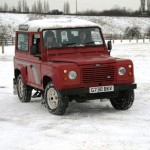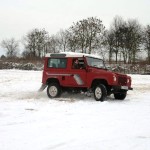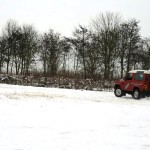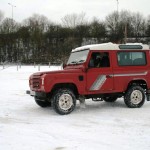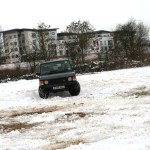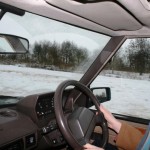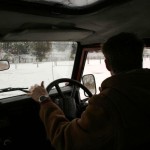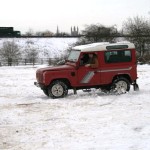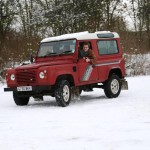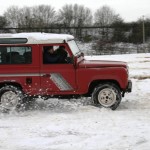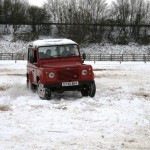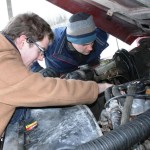When you have a 4×4 you actually look forward to seeing Amber Weather Warnings and animated snowflakes on the weather forecast. For the owners of older Land Rovers the ability to keep on motoring through the ‘chaos’ of a typical British snowfall (i.e. the sort of weather than wouldn’t even register as a ‘rather nippy morning’ in most other countries along the 50th Northern Parallel) is payback for all those character-forming ‘quirks’ of the marque.
Land Rovers, essentially, make the British winter fun because you can use them fully as God (or, at least, the Wilks Brothers) intended. Just as it’s hard to get the appeal of a sports car until you’re on a track or a really twisty bit of country road the less-than-stellar road performance of an old diesel Land Rover on dry tarmac in temperate conditions all comes good once the going gets slippy and you suddenly ‘get it’.
In this spirit, and with the thaw seeming to be getting underway, it only made sense to find a large, deserted, but ice-bound car park and let a couple of Solihull’s finest products off the lead for half an hour. It was an interesting pairing- my Ninety CSW Diesel Turbo on one hand and a Range Rover Vogue 3.9Efi Automatic on the other. Both displayed the same grin-inducing characteristics under ‘encouraging’ driving- a scarcely credible reluctance to surrender their grip on the ice even when seriously provoked followed by a very controllable ability to four-wheel-drift under power. Even with nearly two tons of steel and Birmabright sliding sideways just dumping the throttle and spinning the steering wheel straight saw everything return to normal.
For all their similiarities in handling and nearly identical suspension systems the Landy and the Rangey did show the difference in their breeding. The Land Rover lacks anti-roll anything and has stiff rear springs that only really start working with half a ton of hay in the back. As such it displayed almost Citroen-like levels of body roll and some interesting rebound effects when hitting the odd snow-hidden bump. On the other hand its manual gearbox and mechanical centre diff lock meant that had much more predictable grip levels. The Range Rover cruised serenely around the car park like a dreadnought patrolling a choppy North Sea, its squidgy springs soaking up all the imperfections perfectly. The only noticeable defect was its viscous-operated automatic centre difflock which meant that it was continually shuttling between ‘open’ and ‘locked’ 4WD mid-drift.
- Body ROOOOLLLLLLLLL!!!
- The Range Rover put the biggest smile on my face. For obvious reasons.
- Land Rover steering isn’t really made for performing Scandavian Flicks
- 2.5TDs are fascinating things

